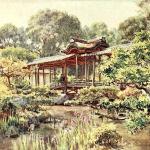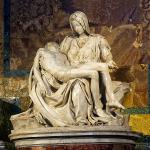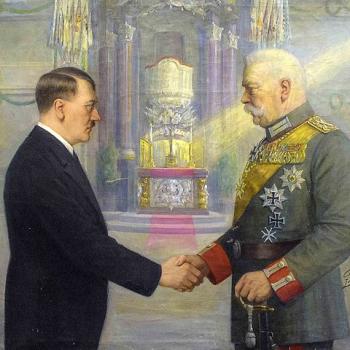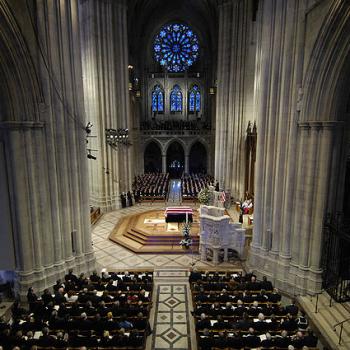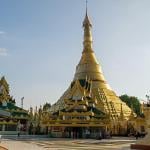Leonardo da Vinci‘s The Last Supper has a surprising history. Even being asked to paint it may have been a surprise to da Vinci. The Duke of Milan Ludovico il Moro originally had commissioned him to produce a grand equestrian statue honoring the Duke’s father, Francesco Sforza. It was to be the largest bronze equestrian statue in the world. And the Duke had acquired 70 tons of bronze to make it happen. The artist prepared meticulously over a period of years to cast the statue. Da Vinci studied horse anatomy and created an elaborate plan for casting the statue from clay models. He hoped the statue would be the work that would make his career.
In 1494 da Vinci was just about to begin the casting process when King Charles VIII of France invaded the Italian Peninsula. The Duke of Milan sent the seventy tons of bronze to his father-in-law, the Duke of Ferrara. to be made into cannon balls for defense. The grand equestrian statue was never cast.
Instead, the Duke of Milan asked Leonardo da Vinci to paint something nice on a wall of a monastery on his property. It’s believed at the time the Duke had planned to turn the structure into a family mausoleum. Those plans changed, and eventually the room needing decoration became a refectory, which is a fancy word for dining hall. And that is where Leonardo da Vinci painted The Last Supper.
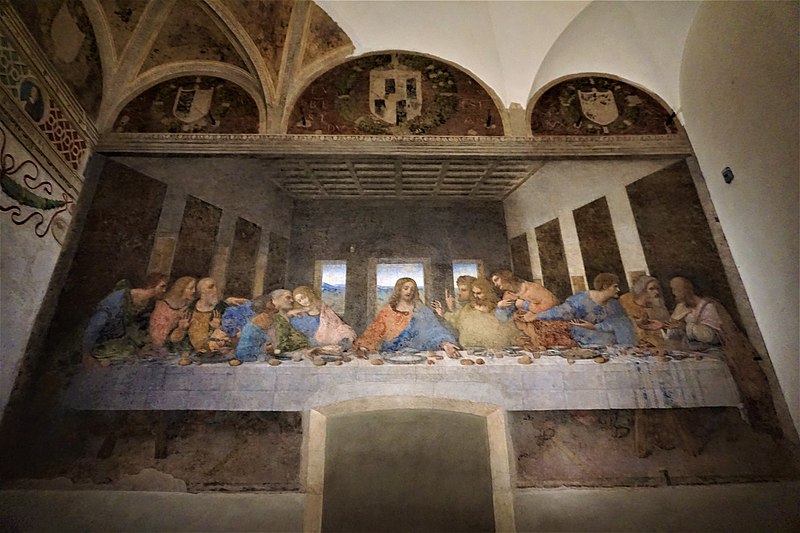
Leonardo da Vinci’s The Last Supper: Composition
The Last Supper depicts the last meal shared by Jesus and his disciples before the Crucifixion. The Gospels describe this as a Passover meal shared in an “upper room” in Jerusalem. The painting captures the moment at which Jesus said one of those at the table would betray him (see, for example, Matthew 14:18-21). The apostles’ faces and postures masterfully depict a variety of emotions — fear, anger, shock. Jesus gestures toward the bread and wine. He is about to institute the sacrament of the Eucharist (Matthew 14:22-25). The Last Supper is a huge painting, measuring 4.60 meters high and 8.80 meters wide (about 15 by 28 feet). This Discovering da Vinci website allows you to explore the painting in detail, including identifying which figure is which apostle.
It’s believed Leonardo da Vinci began work on The Last Supper in 1494 or 1495. He decided not to use the standard technique for fresco painting. Usually to paint on a wall someone applies wet plaster to the section to be painted that day. Then the artist applies water-based paint which will blend with the drying plaster. This creates a long-lasting image. The drawback is that the artist must work quickly and has limited ability to make changes. Da Vinci decided he couldn’t work that way. Instead, he painted on dry walls with tempera and oil paint. This gave him the colors and other effects he wanted, while the painting was new, at least. It’s believed he finished it in 1498.
In 1494, when the equestrian statue commission was canceled, Leonardo da Vinci (1452–1519) was 42 years old. He had not yet taken the art world by storm. Indeed, his career had been rocky. He had failed to finish several commissions and was considered unreliable. Historian Ross King, author of the book Leonardo and the Last Supper (Bloomsbury USA, 2013) told an interviewer that in 1494 “Leonardo was desperate to create what he called a ‘work of fame’ — something that would make him famous for posterity.” The Last Supper accomplished that. It was a sensation during da Vinci’s lifetime and became famous throughout Europe.
The Further Adventures of The Last Supper
Unfortunately, the painting began to deteriorate almost immediately. And it’s a wonder the painting is still intact. King Louis XII of France invaded and occupied Milan in 1499 and wanted to cut out the piece of wall on which The Last Supper was painted and take it back to France. He was talked out of that, obviously.
Even so, by the middle of the 16th century the painting was considered ruined. Humidity and the failure of da Vinci’s materials had caused much of the image to flake away. One observer called it “a dazzling mass of dots.” In 1652, a door was added to the wall beneath the painting, cutting off Jesus’ feet.
In 1796 troops of the French First Republic, led by a young general named Napoleon Bonaparte, occupied the monastery. The French threw rocks at the painting and gouged out some of the apostles’ eyes. At other times the room was used to house prisoners or horses. In 1945 Allied forces bombed the monastery and mostly destroyed it. But The Last Supper wall remained. A protective structure had been built around the wall in anticipation of bombing.
The Many Restorations
Over the centuries several artists have attempted to restore the painting. Usually these efforts didn’t help. In the early 19th century an artist named Stefano Barezzi tried to transfer the mural to canvas. The effort destroyed Christ’s left hand. Public outcry stopped him. But 30 years later he came back to repaint the whole mural, an effort art historians called “calamitous.” Another “restorer,” Ernesto Silvestro, in 1924 gave Saint James six fingers.
And then restorers removed the overpainting to get to what was left of da Vinci’s brush strokes and start over. Fortunately some of Leonardo da Vinci’s assistants — a couple of whom probably worked with da Vinci on The Last Supper — made copies of the masterpiece in oil while it was still new. This gave the various restorers something to go by.
A restoration that began in 1977 used ultrasound, infrared cameras, electronic sensors, and other newfangled gizmos to scientifically analyze the wall and the paint. Years of grime and overpaint were removed with solvents formulated to work only on non-da Vinci materials. The result was a painting with brighter colors that didn’t look quite like the one anyone remembered. Since that restoration more care has been taken to control temperatures and humidity in the room to reduce further deterioration.
The Last Supper inspired many myths and legends. Art experts say there are no hidden symbols in the painting (and if there had been, they’d be gone now). And to clear up another popular myth, the effeminate figure next to Jesus is not Mary Magdalene but John, the youngest apostle. It was common to depict John as an androgynous youth. And in spite of its messy history, The Last Supper is still a masterpiece.


